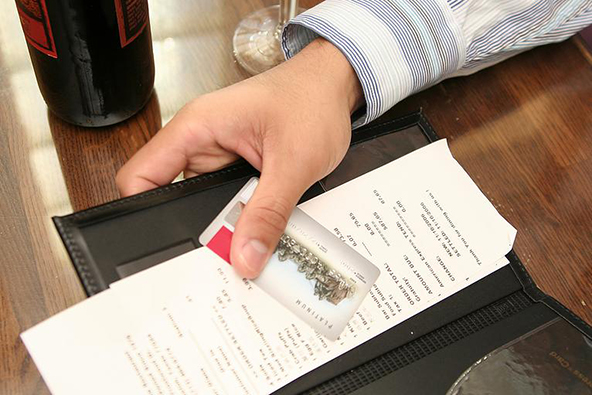How to Handle Credit Card Transactions at Restaurants

Restaurants that accept credit cards, like gas stations and super markets, enjoy some benefits that are unavailable to most other merchants. For example, no signatures are required on transactions under $25, which speeds up the checkout process at quick service restaurants. Even more importantly, restaurants get special interchange rates, which are often lower than what other card-present merchants have.
There is a peculiar feature of restaurant transactions, however, that differentiates them from the rest of the field. It has to do with the tip that is added to the check amount. Restaurant owners and managers need to know how to authorize and process card transactions, so that credit card rules are complied with, customers are kept satisfied and chargebacks are prevented. In this post I will explain how to do that.
0% Tip Transaction Authorizations
You should always request authorizations for the check amount, excluding any tip amount! It is critical that you understand and comply with this rule. There are at least a couple of reasons why you should leave the tip out of the authorization request, as illustrated by the following hypothetical scenarios:
- The check amount is $50 and you request an authorization approval for $60 ($50 + 20%). You get your approval and the cardholder is charged $60, however he decides to leave $8 in tip, which brings the total to $58.
- The check amount is $50 and you obtain an authorization approval for $60. The customer’s card again is charged for $60, however he decides to leave a tip in cash, so the total is $50.
In both of these scenarios, the restaurant overcharges the customer, which will inevitably lead to a dispute. If you are lucky, your customer will call you first, so you can issue a refund and the whole thing will only end up costing you the time for handling the refund (which can add up). If you are not so lucky, the customer will call his issuer and initiate a customer dispute. Either way, your customer may feel cheated by you and decide to not come back to your restaurant again.
What you need to know is that restaurant authorizations are valid for the check amount plus 20 percent, so that there is no need for you to add an estimated tip amount to the authorization request. Only if your customer leaves a tip that is greater than 20 percent of the check amount you will need to request an additional authorization for the difference (the amount above the sum of the check and tip amounts).
How to Handle Restaurant Transactions
So with the above information in mind, let’s review some of the unique restaurant credit card acceptance best practices. All regular transaction processing procedures apply, so there is no need to go over them.
- Return the right card to its cardholder. During your busiest hours, you may end up collecting quite a few cards, so it’s important to match the card to the sales receipt, before returning them to your customer. I know it can get a bit hectic in rush hours, but you should make the few seconds needed to compare this information.
- Don’t charge a penalty fee for a reservation cancellation or “no show” without proper disclosure. You must clearly disclose your cancellation or no show policy at the time the reservation is made.
- Match the account number on the receipt to the one on the card. Needless to say, these two numbers must be identical. Otherwise, you may be dealing with a counterfeit card and will have to make a Code 10 call.
To reiterate, all regular credit card processing procedures must be followed, including requesting and obtaining an authorization approval and verifying the validity of the card and the cardholder.
The Takeaway
Restaurant credit card transactions are considered very low risk by Visa and MasterCard, which is why they get lower interchange rates. Of course, every now and then we hear about a skimming scam somewhere, but overall a restaurant is as safe an environment to make a card payment as there is.
It’s up to you to keep it that way and it doesn’t take much to do so. Just follow the above suggestions and you’ll be fine. As far as skimming is concerned, you need to be careful with whom you hire. You may also want to consider instituting a policy for completing card payments that would cover the whole process from taking the card from the customer to swiping it to returning it back. Ideally, you would want to have someone supervising the entire process, so that to make it difficult for a crooked employee to hide somewhere and swipe the card through a skimming device.
Image credit: Cardlinkinc.com.



Thanks for the post. Most of the time accepting cards at my restaurant is a routine, but every now and then there will be an issue that needs to be resolved and it’s nice to have somewhere to turn to for advice.